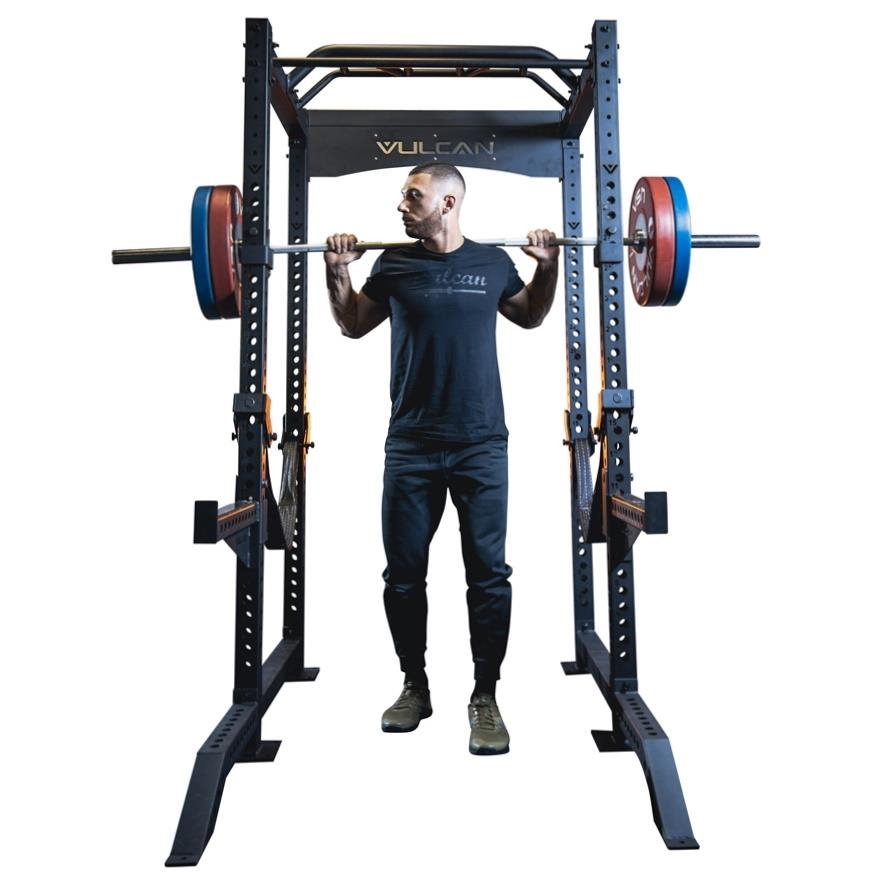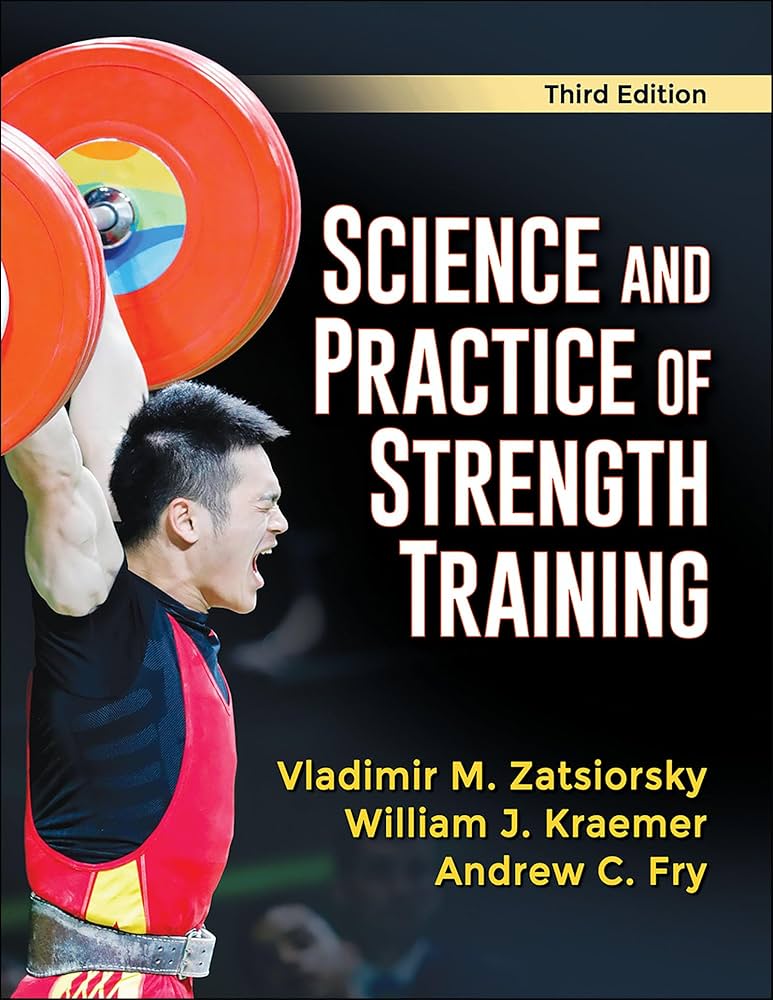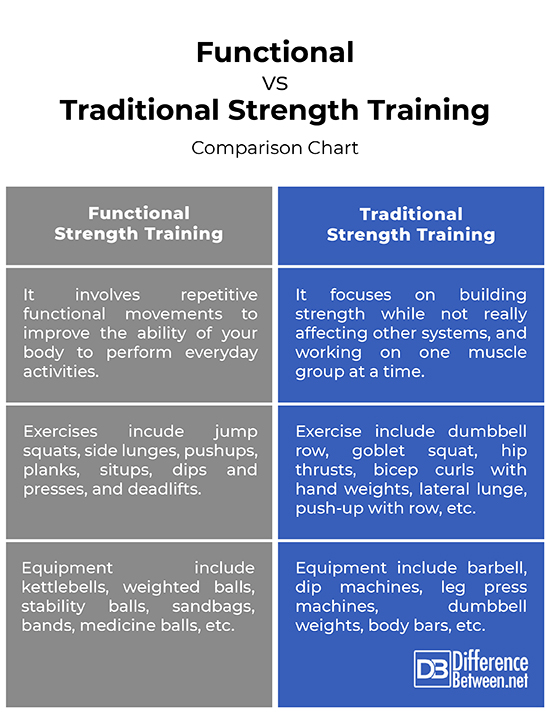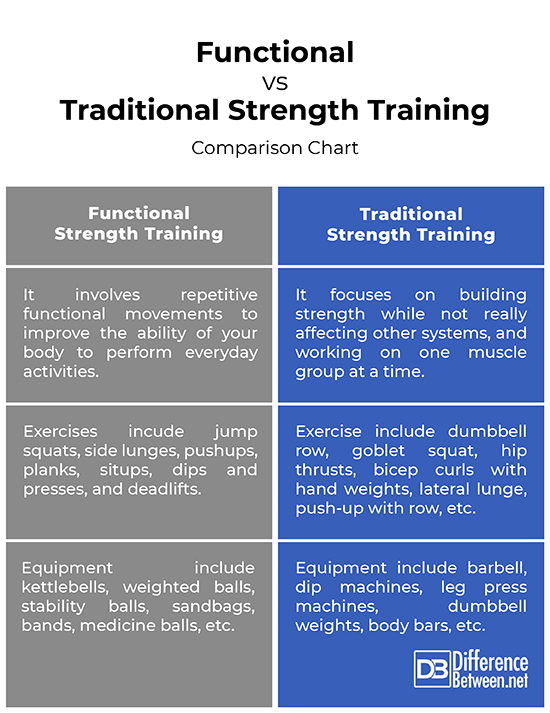Functional strength training focuses on improving everyday movements, while traditional strength training targets muscle growth and isolation. Both methods offer distinct benefits and can complement each other.
Functional strength training emphasizes exercises that mimic daily activities, enhancing overall body coordination and stability. This type of training often includes compound movements like squats, lunges, and kettlebell swings, which engage multiple muscle groups simultaneously. On the other hand, traditional strength training typically involves isolated exercises, such as bicep curls and leg presses, aimed at increasing muscle mass and strength in specific areas.
Combining both approaches can lead to a balanced fitness regimen, offering improved performance in daily tasks and optimal muscle development. By understanding their unique benefits, you can tailor your workouts to meet your individual fitness goals.
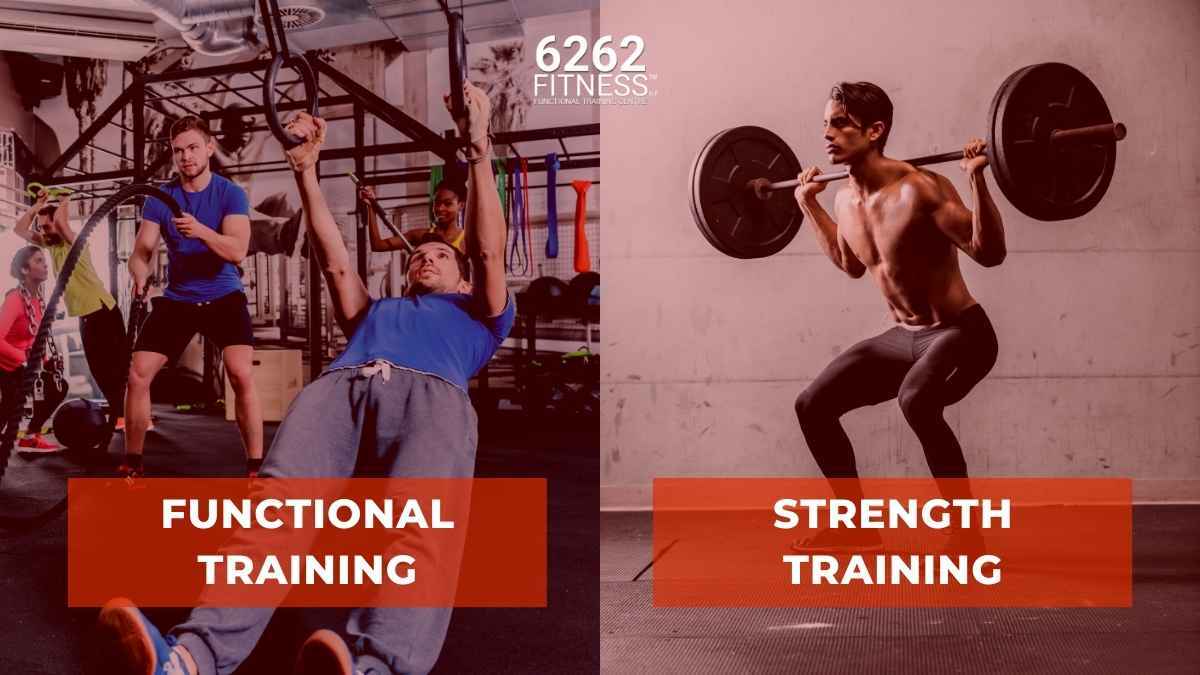
Credit: 6262fitness.com
Functional Strength Training Unveiled
Functional strength training focuses on improving daily movements. It aims to enhance balance, coordination, and flexibility. Exercises mimic real-life activities. This training helps in preventing injuries. It also boosts overall body strength.
Exercises include squats, lunges, and push-ups. Also, planks and deadlifts are common. Each exercise targets multiple muscle groups. This training often uses body weight or small equipment. Dumbbells and resistance bands are popular tools. Movements are usually dynamic and multi-directional.

Credit: m.facebook.com
Traditional Weightlifting Explored
Explore the differences between functional strength training and traditional strength training. Functional routines enhance everyday movements, while traditional methods focus on muscle isolation for strength gains. Discover which approach best suits your fitness goals.
Key Characteristics
Traditional weightlifting focuses on isolating muscle groups. It uses equipment like barbells, dumbbells, and machines. This method targets specific muscles to build strength and size. Exercises often include bench presses, bicep curls, and leg presses. These routines help in gaining muscle mass and improving muscle definition. Training usually follows a set rep range, such as 8-12 reps per set.
Common Routines
Common routines include a split routine. This means working different muscle groups on different days. For example, chest and triceps on Monday, back and biceps on Tuesday, and legs on Wednesday. Another popular routine is the full-body workout. This involves training all muscle groups in one session, usually three times a week. Both routines aim to increase muscle strength and improve overall fitness.
Muscle Engagement And Movement
Functional strength training targets multiple muscles at once. This helps with everyday movements. Traditional strength training focuses on isolating specific muscles. This method builds muscle size and strength. Both methods have unique activation patterns.
Functional training improves flexibility and range of motion. It uses dynamic exercises. Traditional training often uses fixed movements. These exercises are done with machines or free weights. Functional exercises mimic real-life activities. This enhances overall movement quality.
Real-life Applicability
Functional strength training enhances everyday movements and activities, while traditional strength training focuses on muscle growth and definition. Both methods offer valuable benefits depending on individual goals and lifestyle needs.
Transference To Daily Tasks
Functional strength training helps in performing daily activities better. It focuses on movements used in everyday life. This training improves balance, coordination, and flexibility. Traditional strength training builds muscle mass and strength. It uses machines and free weights. Functional exercises use body weight and simple equipment. Both types help you stay fit and healthy. Functional training can make tasks like lifting groceries easier.
Sport-specific Advantages
Athletes benefit from functional strength training. It mimics sports movements. This helps improve performance. Traditional strength training builds muscle power and endurance. Both methods are useful for athletes. Functional exercises help in preventing injuries. They strengthen muscles used in sports. Traditional training boosts overall strength. Combining both methods can be very effective.
Risk Of Injury: A Critical Analysis
Functional strength training uses natural body movements. It often includes balance and flexibility. Traditional strength training focuses on heavy weights. Risk of injury can be higher with heavy weights. Proper form is vital in both methods. Trainers often recommend supervised sessions for beginners. Functional training may be safer for daily activities.
Functional training can improve overall body function. It helps in daily activities. Traditional training builds muscle mass and strength. Both types can benefit long-term health. Joint health is crucial in both methods. Functional training may reduce joint stress. Traditional training may increase muscle wear and tear.
Progression And Adaptability
Functional strength training offers high customization potential. Exercises can be tailored to fit individual needs. Traditional strength training follows a more rigid structure. Functional training adapts to real-life movements. This makes it suitable for all skill levels.
Functional strength training can be easily scaled. Beginners and advanced athletes can use the same program. Exercises can be made easier or harder. Traditional strength training often uses fixed weights. This can make it less adaptable for new users. Functional training provides more flexibility.
Psychological And Motivational Aspects
Functional strength training often uses variety in workouts. This helps keep the mind engaged. Different exercises target different muscle groups. This can be more fun and exciting. Traditional strength training may feel repetitive. Doing the same exercises can be boring. Engagement is key for long-term success.
Functional training often involves complex movements. These movements require focus and coordination. This provides a mental challenge. It keeps the brain active. Traditional strength training focuses on simple movements. These movements are easy to learn. They do not challenge the brain as much. A mental challenge can make workouts more rewarding.
Equipment And Accessibility
Functional strength training often uses minimal equipment. It can be done at home with items like resistance bands or dumbbells. Traditional strength training usually needs more equipment. This includes barbells, weight machines, and benches. Such equipment is often found in gyms.
Home-based functional training needs less investment. It also requires less space. A small corner in your living room can work. Traditional strength training can be more expensive. A gym membership or a home gym setup is often required. This setup also needs more space.
Community And Cultural Perspectives
Social support plays a key role in both training styles. Functional strength training often involves group classes. These classes can boost motivation and commitment. Traditional strength training is usually done solo. Gym buddies can still offer support and encouragement. Both methods benefit from a strong community.
Functional strength training has gained popularity in recent years. It appeals to those seeking practical strength. Traditional strength training remains popular too. Lifters enjoy the challenge of lifting heavier weights. Each method has its own dedicated followers.

Credit: www.youtube.com
Final Verdict: Balancing The Scales
Choosing between functional strength training and traditional strength training depends on your goals. Functional strength training helps with daily activities. Traditional strength training focuses on muscle growth and power. Both types offer unique benefits. Think about what you want to achieve. Do you want to lift heavy weights or improve daily movements?
A hybrid approach combines both training styles. This method ensures a balanced workout. You can gain muscle and improve functional strength. Mix exercises from both types for the best results. Try lifting weights and doing bodyweight exercises. This keeps workouts fun and varied. The hybrid method suits most fitness goals. Adjust the balance based on your needs. Start with a plan that fits your lifestyle.
Frequently Asked Questions
What Is The Difference Between Traditional And Functional Strength Training?
Traditional strength training focuses on isolating specific muscles. Functional strength training targets multiple muscle groups to improve everyday movements and overall stability.
What Is The Difference Between Functional And Traditional Strength Training On Apple Watch?
Functional strength training on Apple Watch focuses on movements that mimic real-life activities. Traditional strength training targets specific muscle groups.
Does Functional Strength Training Burn More Calories Than Traditional?
Functional strength training can burn more calories than traditional strength training. It engages multiple muscle groups, increasing calorie expenditure.
Can You Build Muscle Functional Training?
Yes, functional training can build muscle. It uses natural movements to improve strength, flexibility, and endurance.
What Is Functional Strength Training?
Functional strength training focuses on exercises that mimic daily activities to improve overall functional movement and stability.
What Is Traditional Strength Training?
Traditional strength training involves exercises that target specific muscle groups to increase muscle mass and strength.
Which Is Better For Athletes?
Functional strength training is better for athletes as it enhances performance by improving coordination, balance, and agility.
Does Functional Strength Training Build Muscle?
Yes, functional strength training builds muscle, but it also emphasizes improving overall movement patterns and functional capabilities.
Can Traditional Strength Training Improve Flexibility?
Traditional strength training can improve flexibility if combined with proper stretching routines and exercises targeting range of motion.
Is Functional Strength Training Good For Beginners?
Functional strength training is great for beginners because it focuses on foundational movements that are essential for daily activities.
Conclusion
Choosing between functional and traditional strength training depends on your fitness goals. Both methods offer unique benefits. Functional training enhances everyday movements, while traditional training builds muscle mass. Consider incorporating both into your routine for a balanced approach. This way, you can achieve optimal health and fitness results.







